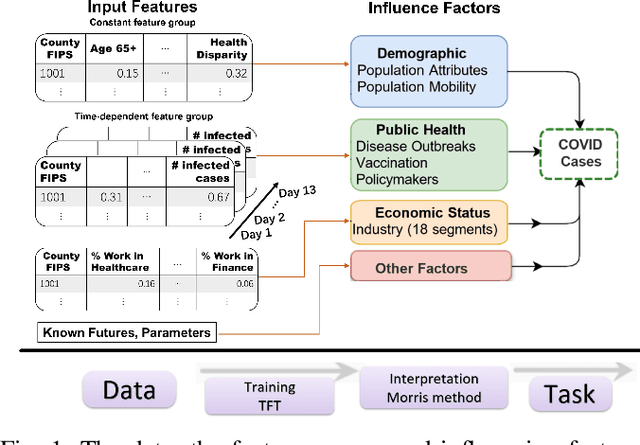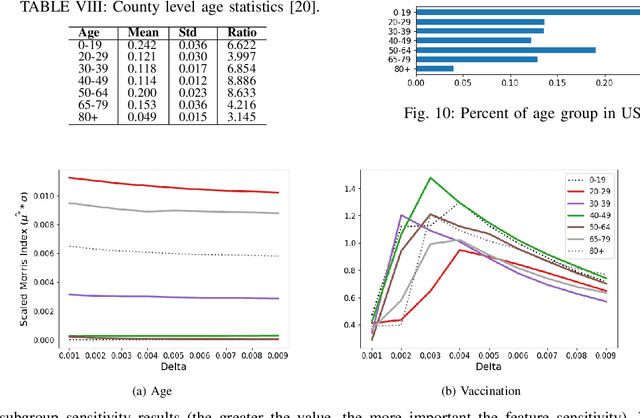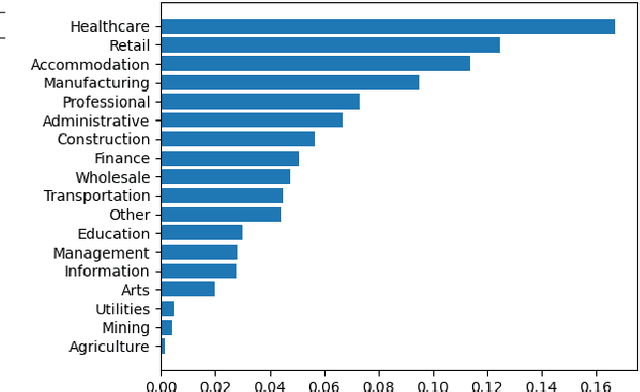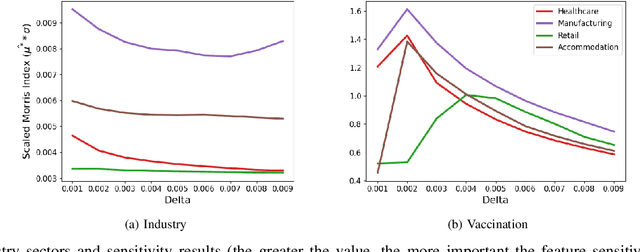Md Khairul Islam
Scalable Cosmic AI Inference using Cloud Serverless Computing with FMI
Jan 08, 2025



Abstract:Large-scale astronomical image data processing and prediction is essential for astronomers, providing crucial insights into celestial objects, the universe's history, and its evolution. While modern deep learning models offer high predictive accuracy, they often demand substantial computational resources, making them resource-intensive and limiting accessibility. We introduce the Cloud-based Astronomy Inference (CAI) framework to address these challenges. This scalable solution integrates pre-trained foundation models with serverless cloud infrastructure through a Function-as-a-Service (FaaS) Message Interface (FMI). CAI enables efficient and scalable inference on astronomical images without extensive hardware. Using a foundation model for redshift prediction as a case study, our extensive experiments cover user devices, HPC (High-Performance Computing) servers, and Cloud. CAI's significant scalability improvement on large data sizes provides an accessible and effective tool for the astronomy community. The code is accessible at https://github.com/UVA-MLSys/AI-for-Astronomy.
Large Language Models for Financial Aid in Financial Time-series Forecasting
Oct 24, 2024Abstract:Considering the difficulty of financial time series forecasting in financial aid, much of the current research focuses on leveraging big data analytics in financial services. One modern approach is to utilize "predictive analysis", analogous to forecasting financial trends. However, many of these time series data in Financial Aid (FA) pose unique challenges due to limited historical datasets and high dimensional financial information, which hinder the development of effective predictive models that balance accuracy with efficient runtime and memory usage. Pre-trained foundation models are employed to address these challenging tasks. We use state-of-the-art time series models including pre-trained LLMs (GPT-2 as the backbone), transformers, and linear models to demonstrate their ability to outperform traditional approaches, even with minimal ("few-shot") or no fine-tuning ("zero-shot"). Our benchmark study, which includes financial aid with seven other time series tasks, shows the potential of using LLMs for scarce financial datasets.
Federated Learning in Healthcare: Model Misconducts, Security, Challenges, Applications, and Future Research Directions -- A Systematic Review
May 22, 2024Abstract:Data privacy has become a major concern in healthcare due to the increasing digitization of medical records and data-driven medical research. Protecting sensitive patient information from breaches and unauthorized access is critical, as such incidents can have severe legal and ethical complications. Federated Learning (FL) addresses this concern by enabling multiple healthcare institutions to collaboratively learn from decentralized data without sharing it. FL's scope in healthcare covers areas such as disease prediction, treatment customization, and clinical trial research. However, implementing FL poses challenges, including model convergence in non-IID (independent and identically distributed) data environments, communication overhead, and managing multi-institutional collaborations. A systematic review of FL in healthcare is necessary to evaluate how effectively FL can provide privacy while maintaining the integrity and usability of medical data analysis. In this study, we analyze existing literature on FL applications in healthcare. We explore the current state of model security practices, identify prevalent challenges, and discuss practical applications and their implications. Additionally, the review highlights promising future research directions to refine FL implementations, enhance data security protocols, and expand FL's use to broader healthcare applications, which will benefit future researchers and practitioners.
Interpreting Time Series Transformer Models and Sensitivity Analysis of Population Age Groups to COVID-19 Infections
Jan 26, 2024Abstract:Interpreting deep learning time series models is crucial in understanding the model's behavior and learning patterns from raw data for real-time decision-making. However, the complexity inherent in transformer-based time series models poses challenges in explaining the impact of individual features on predictions. In this study, we leverage recent local interpretation methods to interpret state-of-the-art time series models. To use real-world datasets, we collected three years of daily case data for 3,142 US counties. Firstly, we compare six transformer-based models and choose the best prediction model for COVID-19 infection. Using 13 input features from the last two weeks, we can predict the cases for the next two weeks. Secondly, we present an innovative way to evaluate the prediction sensitivity to 8 population age groups over highly dynamic multivariate infection data. Thirdly, we compare our proposed perturbation-based interpretation method with related work, including a total of eight local interpretation methods. Finally, we apply our framework to traffic and electricity datasets, demonstrating that our approach is generic and can be applied to other time-series domains.
Population Age Group Sensitivity for COVID-19 Infections with Deep Learning
Jul 03, 2023



Abstract:The COVID-19 pandemic has created unprecedented challenges for governments and healthcare systems worldwide, highlighting the critical importance of understanding the factors that contribute to virus transmission. This study aimed to identify the most influential age groups in COVID-19 infection rates at the US county level using the Modified Morris Method and deep learning for time series. Our approach involved training the state-of-the-art time-series model Temporal Fusion Transformer on different age groups as a static feature and the population vaccination status as the dynamic feature. We analyzed the impact of those age groups on COVID-19 infection rates by perturbing individual input features and ranked them based on their Morris sensitivity scores, which quantify their contribution to COVID-19 transmission rates. The findings are verified using ground truth data from the CDC and US Census, which provide the true infection rates for each age group. The results suggest that young adults were the most influential age group in COVID-19 transmission at the county level between March 1, 2020, and November 27, 2021. Using these results can inform public health policies and interventions, such as targeted vaccination strategies, to better control the spread of the virus. Our approach demonstrates the utility of feature sensitivity analysis in identifying critical factors contributing to COVID-19 transmission and can be applied in other public health domains.
Transfer learning and Local interpretable model agnostic based visual approach in Monkeypox Disease Detection and Classification: A Deep Learning insights
Nov 14, 2022



Abstract:The recent development of Monkeypox disease among various nations poses a global pandemic threat when the world is still fighting Coronavirus Disease-2019 (COVID-19). At its dawn, the slow and steady transmission of Monkeypox disease among individuals needs to be addressed seriously. Over the years, Deep learning (DL) based disease prediction has demonstrated true potential by providing early, cheap, and affordable diagnosis facilities. Considering this opportunity, we have conducted two studies where we modified and tested six distinct deep learning models-VGG16, InceptionResNetV2, ResNet50, ResNet101, MobileNetV2, and VGG19-using transfer learning approaches. Our preliminary computational results show that the proposed modified InceptionResNetV2 and MobileNetV2 models perform best by achieving an accuracy ranging from 93% to 99%. Our findings are reinforced by recent academic work that demonstrates improved performance in constructing multiple disease diagnosis models using transfer learning approaches. Lastly, we further explain our model prediction using Local Interpretable Model-Agnostic Explanations (LIME), which play an essential role in identifying important features that characterize the onset of Monkeypox disease.
Interpreting County Level COVID-19 Infection and Feature Sensitivity using Deep Learning Time Series Models
Oct 06, 2022



Abstract:Interpretable machine learning plays a key role in healthcare because it is challenging in understanding feature importance in deep learning model predictions. We propose a novel framework that uses deep learning to study feature sensitivity for model predictions. This work combines sensitivity analysis with heterogeneous time-series deep learning model prediction, which corresponds to the interpretations of spatio-temporal features. We forecast county-level COVID-19 infection using the Temporal Fusion Transformer. We then use the sensitivity analysis extending Morris Method to see how sensitive the outputs are with respect to perturbation to our static and dynamic input features. The significance of the work is grounded in a real-world COVID-19 infection prediction with highly non-stationary, finely granular, and heterogeneous data. 1) Our model can capture the detailed daily changes of temporal and spatial model behaviors and achieves high prediction performance compared to a PyTorch baseline. 2) By analyzing the Morris sensitivity indices and attention patterns, we decipher the meaning of feature importance with observational population and dynamic model changes. 3) We have collected 2.5 years of socioeconomic and health features over 3142 US counties, such as observed cases and deaths, and a number of static (age distribution, health disparity, and industry) and dynamic features (vaccination, disease spread, transmissible cases, and social distancing). Using the proposed framework, we conduct extensive experiments and show our model can learn complex interactions and perform predictions for daily infection at the county level. Being able to model the disease infection with a hybrid prediction and description accuracy measurement with Morris index at the county level is a central idea that sheds light on individual feature interpretation via sensitivity analysis.
 Add to Chrome
Add to Chrome Add to Firefox
Add to Firefox Add to Edge
Add to Edge